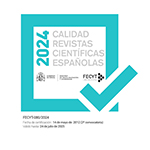Crisis, posmodernidad y planificación estratégica en La Habana
Resumen
La ordenación urbana de los primeros planes de la Revolución se insertaba en los modelos sociológicos estructuralistas, que abordan de manera integral los procesos de transformación social vinculados a las transformaciones urbanas. El Plan Director 1980-2000 suponía el paso desde el constructivismo funcionalista, hacia el concepto de La Habana como ciudad región, donde las partes se integraban en un conjunto adaptable y flexible. La forma del espacio urbano colectivo adoptaba criterios de los modelos semiológicos, para ser expresión clara de la estructura política, económica y social. Durante el denominado “periodo especial” de los años 1990, se da un cambio de paradigma en la base económica. La captación de turismo internacional se convertía en objetivo prioritario, condicionado por la demanda internacional del producto turístico. Las tareas de ordenación del territorio y planeamiento urbanístico asumen la crisis y propugnan un cambio hacia estructuras más flexibles y ajustadas a una realidad cambiante. Los planes de ordenación urbana son antecedidos por planes estratégicos posmodernos, conforme con el pensamiento estratégico para ciudades.Descargas
Descarga artículo
Licencia
La revista Anales de Geografía de la Universidad Complutense, para fomentar el intercambio global del conocimiento, facilita el acceso sin restricciones a sus contenidos desde el momento de su publicación en la presente edición electrónica, y por eso es una revista de acceso abierto. Los originales publicados en esta revista son propiedad de la Universidad Complutense de Madrid y es obligatorio citar su procedencia en cualquier reproducción total o parcial. Todos los contenidos se distribuyen bajo una licencia de uso y distribución Creative Commons Reconocimiento 4.0 (CC BY 4.0). Esta circunstancia ha de hacerse constar expresamente de esta forma cuando sea necesario. Puede consultar la versión informativa y el texto legal de la licencia.












